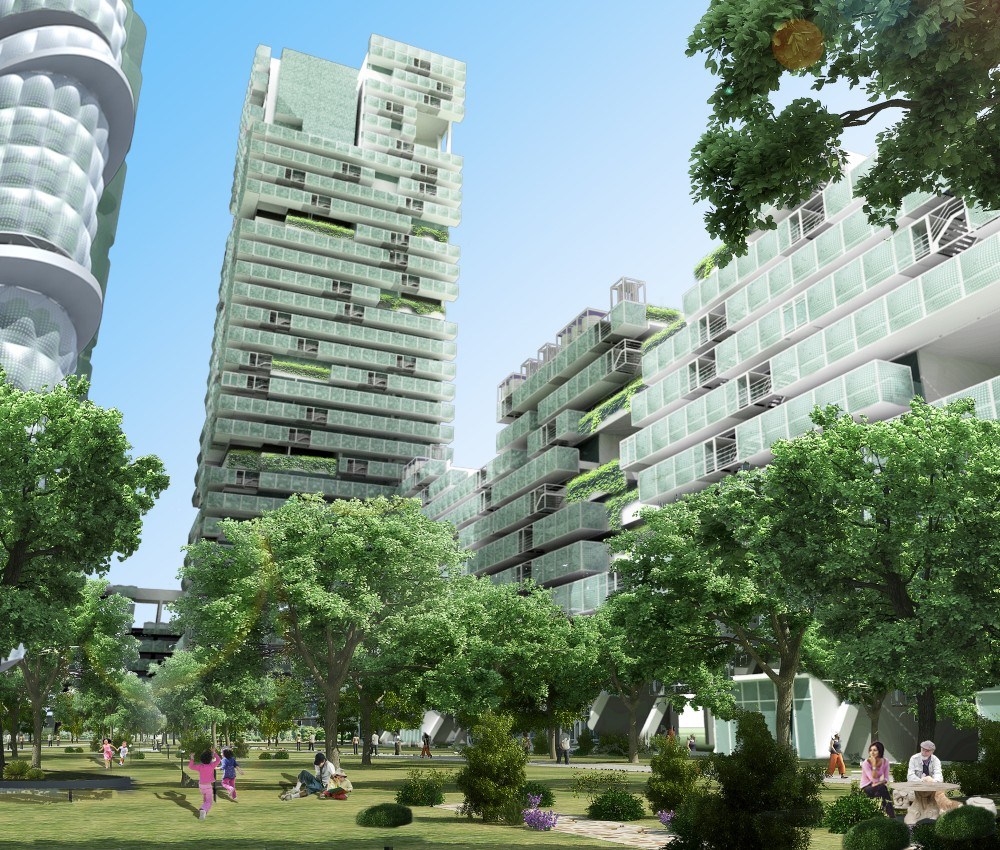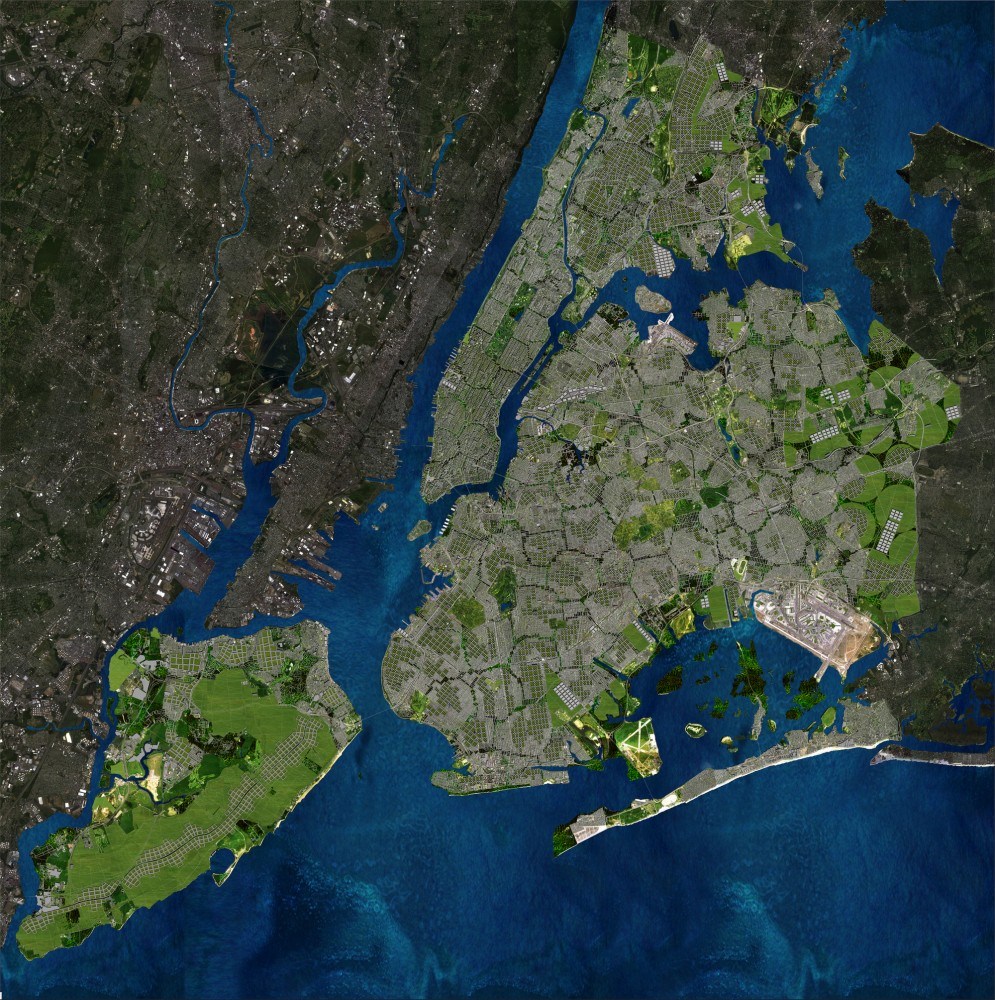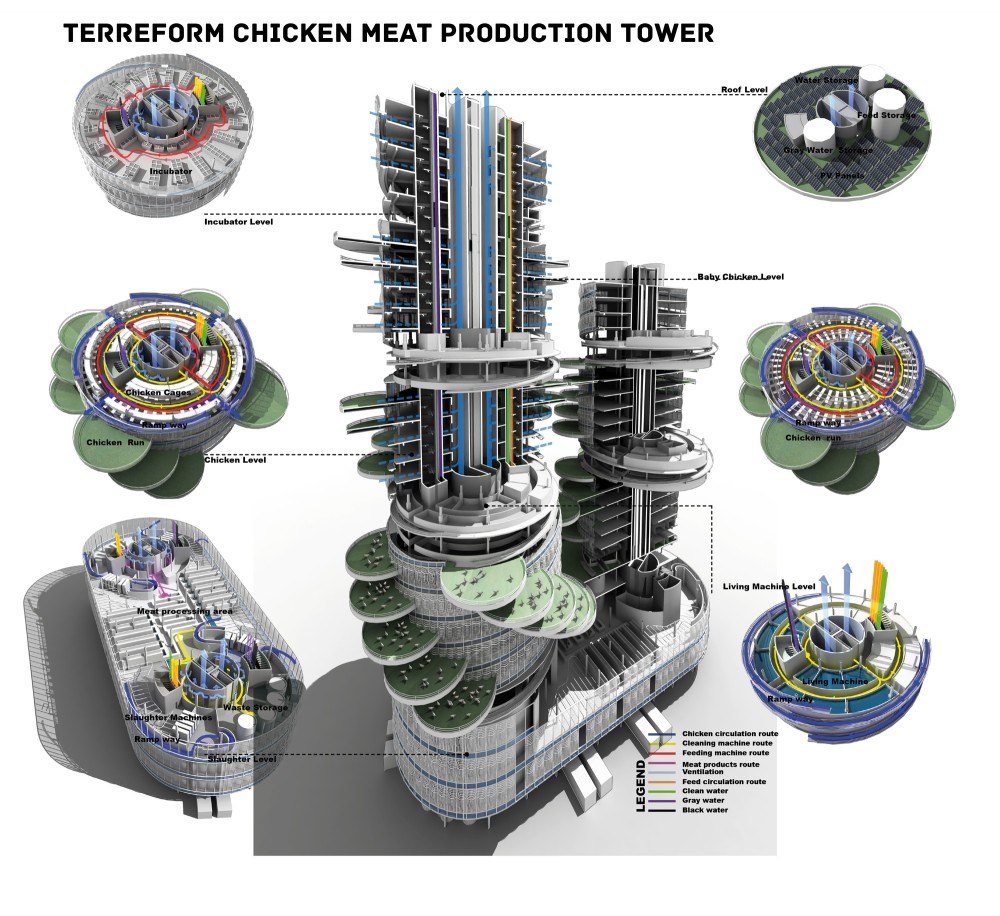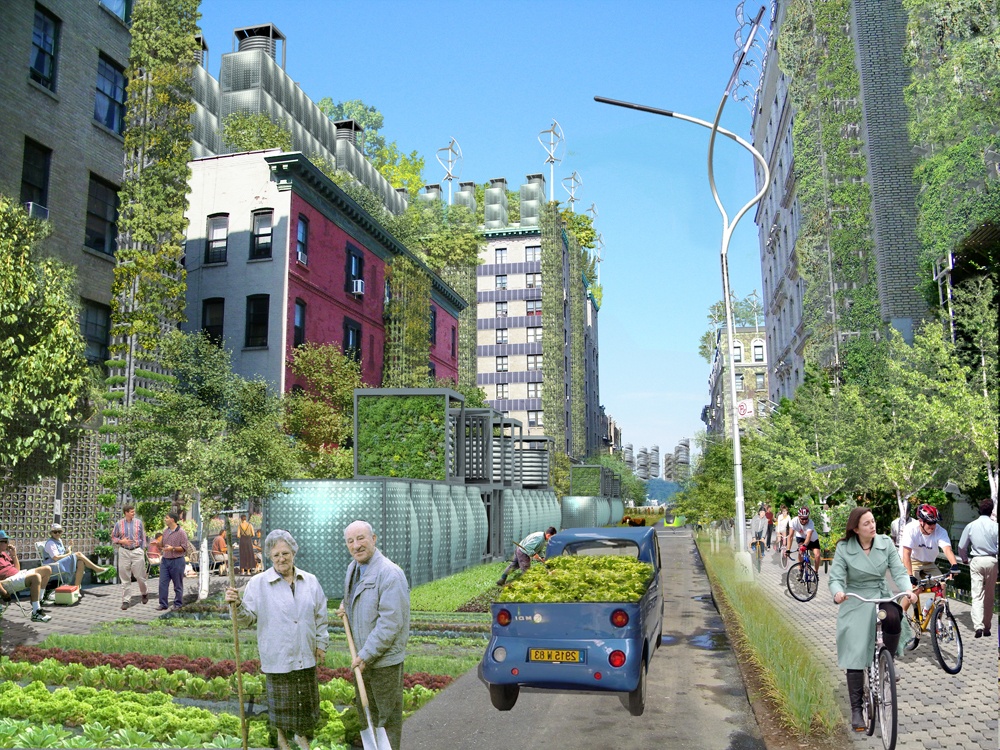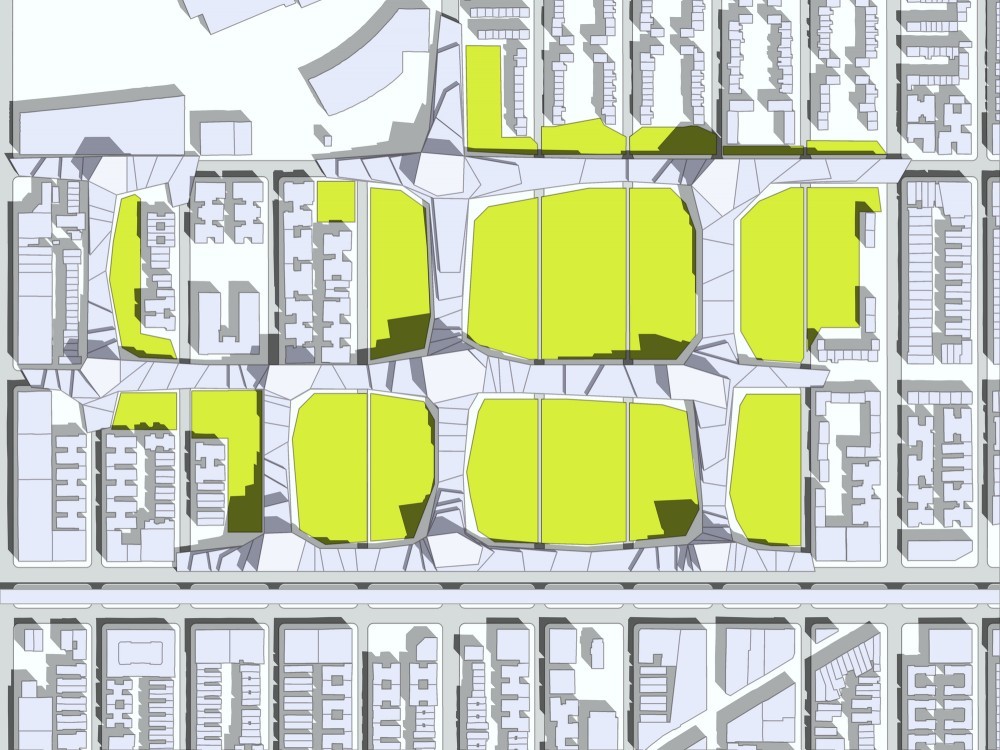Rory Stott reports for Archdaily.
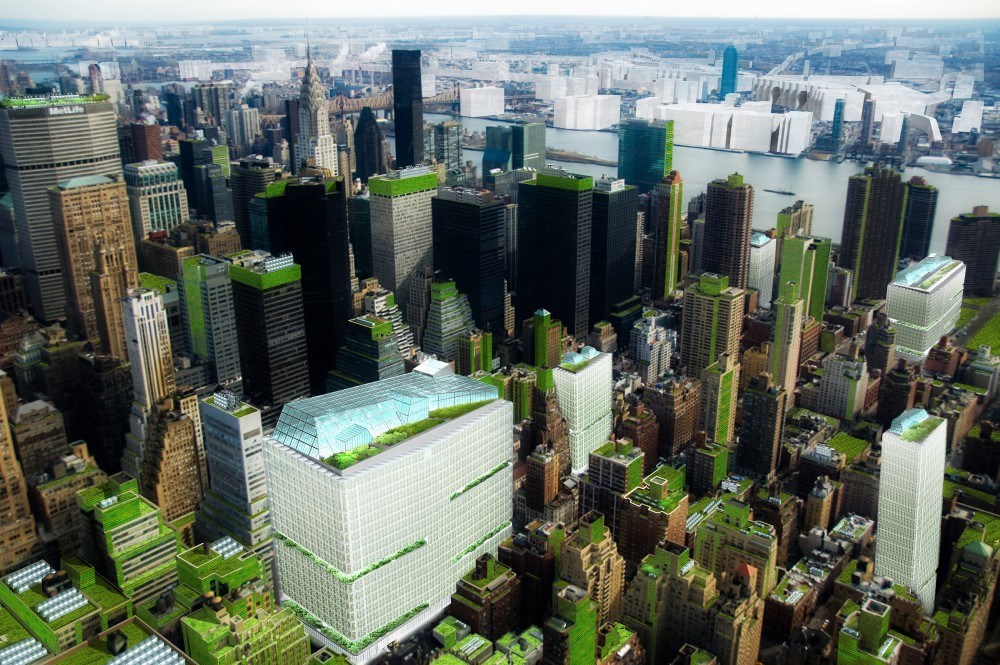
Bird’s-eye view of Midtown Manhattan’s neighborhood food hubs in New York City (Steady) State.
“In an era of incompetent nation states and predatory transnationals, we must ratchet up local self-reliance, and the most logical increment of organization (and resistance) is the city.” This is how Michael Sorkin, writing in Aeon Magazine, explains his hypothetical plan to radically change the landscape of New York City, bringing a green landscape and urban farming into the former concrete jungle.
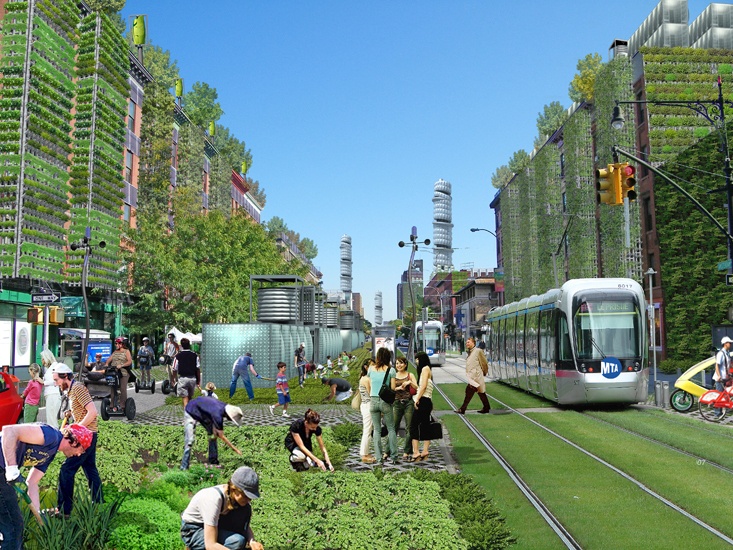
Street view of Amsterdam Ave. in northern Manhattan featuring a mix of traditional and advanced agricultural growing techniques.
The plan, called “New York City (Steady) State”, produced over six years by Sorkin’s Terreform Research Group, is not designed simply for aesthetic pleasure; it’s not even an attempt to make the city more sustainable (although sustainability is the key motivation behind the project). The project is in fact a “thought-experiment” to design a version of New York that is completely self reliant, creating its own food, energy and everything else within its own borders.
Street level view of the interior courtyard space in the Figure Ground Switch.
The key idea behind the project is to create a sustainable society from the bottom up – rather than relying on government to impose one from the top down – by applying autarky, a political concept which describes a completely closed system. This system resonates well with many established notions of sustainability: ideas such as ‘cradle-to-cradle’ or ‘net zero’ often demand closed loops or minimal outside influence.
New York City (Steady) State, Master Plan B.
After defining the extents of the study (including only the five boroughs of New York City and creating “an almost completely ‘unnatural limit’ to constrain the study), the first step was to define how a city as urban as New York might be adapted to provide food for its 8.5 million inhabitants. Using a variety of skyscraper farms, and reclaiming streets and under-utilized city blocks, Terreform has calculated that it would be technically possible to produce 2,500 calories per person, per day. Combining this with a sophisticated distribution network would give each resident access to enough food.
Exterior rendering of a vertical tower designed specifically for meat production.
A plan as dramatic as this obviously brings drawbacks: the first iteration of the design was calculated to require 25 nuclear power stations to generate the energy required to produce all this food, a result that was “somewhat at odds with our larger intentions.” However, this is where the project’s intention as a thought experiment comes into play: the radical design is meant to test boundaries, to take on a seemingly impossible task and see what the implications are of meeting it.
Street view of 147th street in northern Manhattan where dominance has shifted from vehicular circulation to food production and distribution.
“On the whole, we’re sanguine about the differences between the logics of comparative advantage and the politics of self-realization, and the difficulties of negotiating the territory in between,” explains Sorkin. The truly desirable solution to environmental crisis and social inequality will lie somewhere between our current situation and the designs of Terreform. But without their investigation pushing the boundaries of what is feasibly possible – and showing us just how different our urban environment could be – then our quest for sustainability would be limited, and therefore incomplete.
New York City streets and blocks with proposed Figure Ground Switch, where the buildings occupy what were streets and the interior blocks are reserved for vertical towers and traditional food production.
More images of “New York City (Steady) State”.

